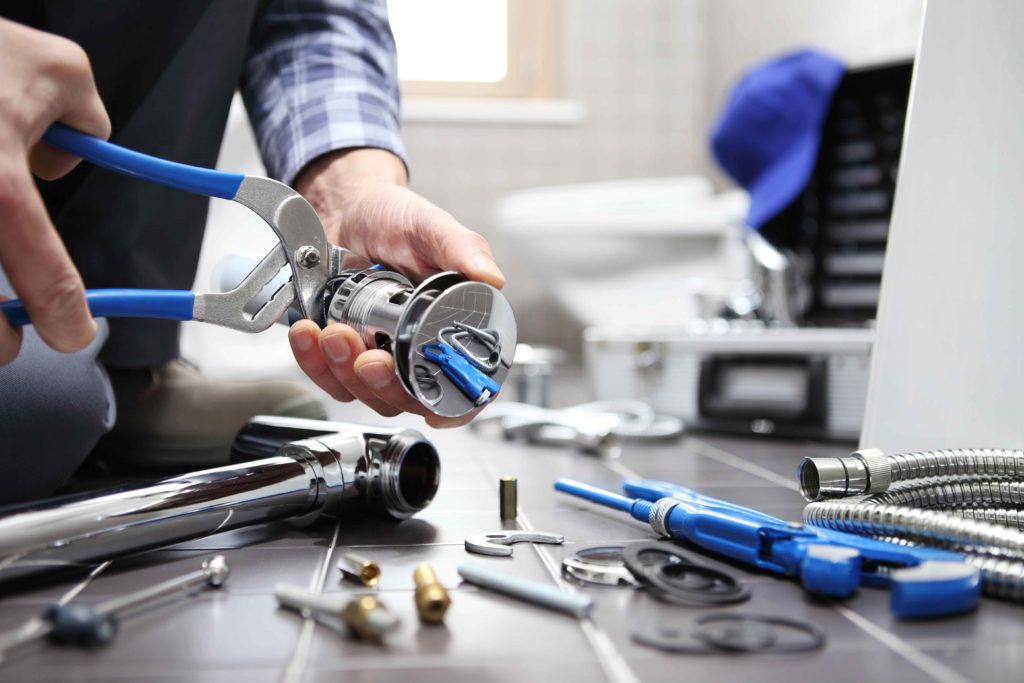What're your thoughts concerning Water Dripping from Faucet: Why and How to Fix?

Trickling taps could feel like a small aggravation, however their effect goes beyond simply the annoyance of the noise. From drainage to incurring unnecessary economic prices and health and wellness dangers, neglecting a leaking faucet can lead to numerous effects. In this write-up, we'll look into why it's vital to address this common household concern quickly and effectively.
Wastefulness of Water
Ecological Effect
Dripping taps add considerably to water wastage. According to the Epa (EPA), a single faucet trickling at one drip per secondly can squander greater than 3,000 gallons of water per year. This not just pressures water resources yet likewise affects ecosystems and wild animals dependent on them.
Financial Prices
Boosted Water Bills
Past the ecological effect, dripping taps can inflate water costs significantly. The accumulated waste over time converts into greater utility expenditures, which could have been stayed clear of with prompt repair work.
Possible Residential Property Damage
Additionally, prolonged trickling can lead to harm to fixtures and surface areas bordering the faucet. Water build-up can create staining, rust, and even structural concerns if left unattended, leading to added repair work prices.
Health Worries
Mold And Mildew and Mildew Growth
The continuous visibility of moisture from a leaking tap creates a suitable environment for mold and mold development. These fungi not only jeopardize interior air quality but also present wellness risks, especially for people with respiratory system conditions or allergies.
Waterborne Illness
Stationary water in trickling faucets can become a breeding ground for microorganisms and various other pathogens, enhancing the danger of waterborne illness. Impurities such as Legionella bacteria thrive in stagnant water, potentially causing significant illnesses when ingested or breathed in.
Do it yourself vs. Professional Repair
Advantages and disadvantages of DIY Repair Service
While some might try to deal with a trickling tap themselves, do it yourself fixings feature their very own collection of difficulties. Without proper understanding and devices, DIY attempts can worsen the problem or bring about insufficient fixings, lengthening the trouble.
Advantages of Working With a Professional Plumber
Employing a professional plumber makes certain that the underlying source of the leaking faucet is attended to successfully. Plumbing technicians possess the competence and devices to identify and repair tap problems effectively, saving time and minimizing the risk of more damages.
Step-by-Step Guide to Repairing a Dripping Faucet
Devices Needed
Before attempting to deal with a dripping tap, collect the essential devices, consisting of an adjustable wrench, screwdrivers, replacement components (such as washing machines or cartridges), and plumber's tape.
Common Faucet Issues and Their Solutions
Recognize the kind of faucet and the details problem triggering the drip. Common troubles include worn-out washing machines, corroded shutoff seats, or malfunctioning O-rings. Refer to manufacturer guidelines or on the internet tutorials for step-by-step support on repairs.
Safety nets
Routine Maintenance Tips
To stop leaking taps, do routine upkeep such as cleaning aerators, evaluating for leaks, and replacing damaged parts quickly. In addition, think about installing water-saving gadgets or upgrading to a lot more efficient components.
Significance of Prompt Services
Attending to dripping faucets as quickly as they're discovered protects against further water waste and potential damage, inevitably saving both water and cash in the long run.
Effect On Residential Or Commercial Property Worth
Perception of Well-Maintained Building
Maintaining a building in good condition, including resolving upkeep issues like leaking taps, enhances its viewed worth and desirability among possible buyers or occupants.
Impact on Resale Value
Qualities with properly maintained plumbing components, including faucets, command greater resale worths in the real estate market. Dealing with trickling taps can contribute to a positive perception throughout property evaluations and arrangements.
Ecological Duty
Specific Contribution to Conservation
Taking obligation for taking care of trickling taps aligns with broader efforts toward water preservation and ecological sustainability. Every person's activities jointly make a substantial impact on protecting valuable sources.
Lasting Living Practices
By focusing on punctual repairs and adopting water-saving habits, individuals contribute to sustainable living methods that benefit both present and future generations.
Final thought
Dealing with a dripping tap surpasses simple ease; it's a vital action towards saving water, minimizing monetary expenses, and protecting health and home. Whether with DIY repair work or professional assistance, taking action to fix dripping taps is a tiny yet impactful method to promote accountable stewardship of sources and contribute to a healthier, extra lasting future.
How to Fix a Leaky Faucet: Step-by-Step Repair Guide
A leaky faucet may seem like a simple annoyance, but if it's not fixed promptly, that leak could cost hundreds to potentially thousands. From water damage to mold, mildew, and high water bills, even a tiny leak can be catastrophic if left unattended. Damage like this can even affect the overall value of your home, so it's important to take the right approach for leaky faucet repair. You may need the help of a plumber in some cases, but we've got a few tips you can try on how to fix a leaky faucet before calling the pros.
Four Faucet Types
When you're learning how to fix a leaky faucet, the first step is knowing what kind of faucet you're working with! There are four common types.
Cartridge Faucets
Cartridge faucets come in one- or two-handled varieties. In one-handled cartridge faucets, hot and cold water combines in a single cartridge. In the two-handled versions, hot and cold water are controlled separately and mixed in the faucet.
Ball Faucets
Ball faucets have a single lever you push up and down to adjust the pressure and rotate to change the temperature. A slotted metal ball controls the amount of water allowed into the spout.
Compression Washer Faucets
They're the oldest type of faucet, but they're still used in many homes — especially older ones. Compression faucets have two separate handles that, when turned, raise or lower the washer that seals a water valve. This valve stops water from flowing through the faucet when it is turned off.
Disc Faucets
Disc faucets rarely need to be repaired due to their maintenance-free design. The water flow is controlled by two discs — the upper one raises and lowers against a fixed lower disc, creating a watertight seal. If your disc faucet starts leaking, you may need to replace the seals or clean residue buildup from the inlets.
Fixing a Leaky Faucet
Step 1: Turn Off the Water
Whether you're learning how to fix a leaky bathtub faucet or how to fix a leaky kitchen faucet, always turn off the water supply to your working area when you're fixing a leak. The last thing you want is a flood added to your list of things to fix.
Look for the shutoff valves below your sink or around the tub and turn them clockwise to stop the water flow. If your faucet doesn't have shutoff valves, you may need to turn off the water for the whole house. Check to make sure it's off by turning the faucet on. If nothing comes out, you're ready to start the repair.
Step 2: Take Apart the Faucet
How you disassemble your faucet depends on the type of fixture you have. You can use a flathead screwdriver to remove the caps on top of the handle or handles for cartridge and compression faucets. Inside, you should see handle screws. Unscrew these with a screwdriver to remove the handle.
Disc- and ball-style faucets will typically have an inlet screw near the handle, and removing that will reveal the interior of the faucet.
Detach the Valve Stem
For cartridge- and compression-style faucets, you'll see the inner valve stem or cartridge once you remove the faucet handles. If you have a compression faucet, unscrew the brass valve stem. If you have a cartridge faucet, pull out the cartridge. If your cartridge has been in place for a while, it may require some tools or extra force to remove it due to mineral deposits.
Examine and Replace Parts
Once you've removed the parts, check them out to confirm what needs to be replaced. You may see corroded rubber washers, O-rings, stems, or cartridges. On a ball-style faucet, check the seats and springs for damage.
If you need to repair a leaky disc faucet, check the inlet and seals on the lower disc.
Once you determine what parts must be replaced, visit your local hardware store. Bring the damaged parts with you to ensure you can purchase the correct components to replace them.
Clean Valves and Faucet Cavity
If you've removed a stem or cartridge, you may notice mineral buildup in the faucet's threads. Use white vinegar to clean the valve seat by soaking it for a few minutes, then scrub it away with a soft toothbrush and rinse with warm water. You can also clean the interior of the faucet in the same way.
Reassemble the Faucet
Once your faucet is cleaned and the required parts have been replaced, it's time to reassemble it. Put the pieces back together and slowly turn the water supply back on. Doing this slowly is crucial because too much initial water pressure can damage the new hardware you've just installed.
https://homewarranty.firstam.com/blog/how-to-fix-leaky-faucet

Hopefully you enjoyed reading our post about What Causes Leaky Faucets & How To Fix Them. Thank you so much for taking a few minutes to read through our short article. So long as you enjoyed our blog post plz make sure you remember to share it. Thank you for being here. Kindly check up our blog back soon.